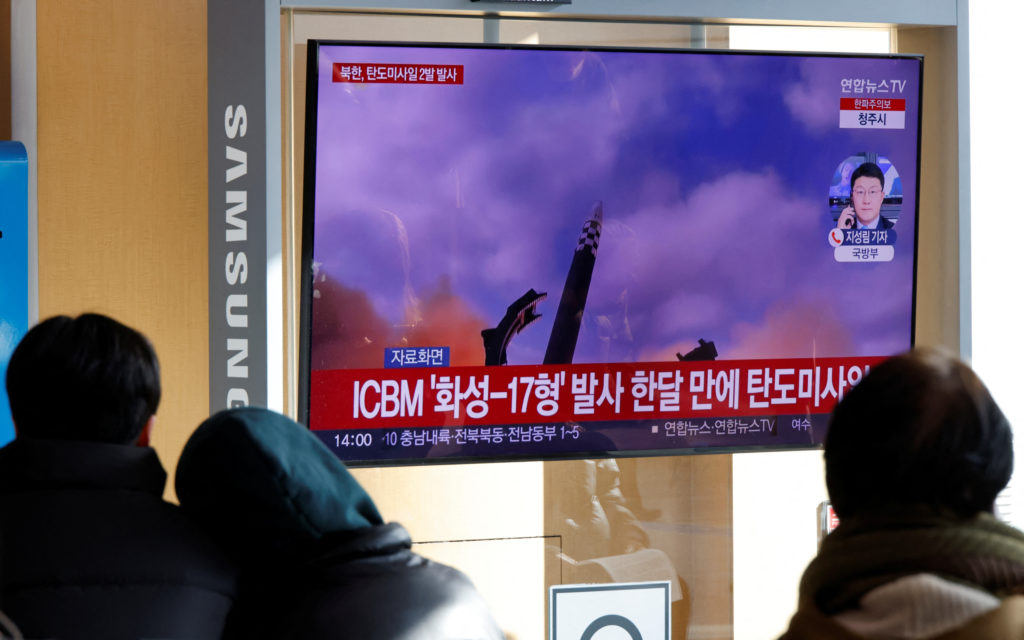North Korea fires 2 missiles capable of reaching Japan in possible response to Tokyo’s new security strategy
SEOUL, South Korea (AP) — North Korea test-fired a pair of ballistic missiles with a potential range of striking Japan on Sunday, in a possible protest of Tokyo’s adoption of a new security strategy to push for more offensive footing against North Korea and China.
The launches came two days after the North claimed to have performed a key test needed to build a more mobile, powerful intercontinental ballistic missile designed to strike the U.S. mainland.
The two missiles traveled from the country’s northwest Tongchangri area about 500 kilometers (310 miles) at a maximum altitude of 550 kilometers (340 miles) before landing in the waters between the Korean Peninsula and Japan, according to the South Korean and Japanese governments.
South Korea’s military described both missiles as medium-range weapons that were launched at a steep angle, suggesting they could have traveled farther if fired at a standard trajectory. North Korea usually tests medium- and longer-range missiles at a high angle to avoid neighboring countries, though it fired an intermediate-range missile over Japan in October, forcing Tokyo to issue evacuation alerts and halt trains.
In an emergency meeting, top South Korean security officials deplored North Korea’s continued provocations that they said came despite “the plight of its citizens moaning in hunger and cold due to a serious food shortage.” They said South Korea will boost a trilateral security cooperation with the U.S. and Japan, according to South Korea’s presidential office.
Japanese Vice Defense Minister Toshiro Ino separately criticized North Korea for threatening the safety of Japan, the region and the international community. The U.S. Indo-Pacific Command said the launches highlight the destabilizing impact of North Korea’s unlawful weapons of mass destruction and ballistic missile programs. It said the U.S. commitments to the defense of South Korea and Japan “remain ironclad.”
Kwon Yong Soo, a former professor at Korea National Defense University in South Korea, said North Korea likely tested its Pukguksong-2 missile, a solid-fueled, land-based variant of its Pukguksong family of missiles that can be…





